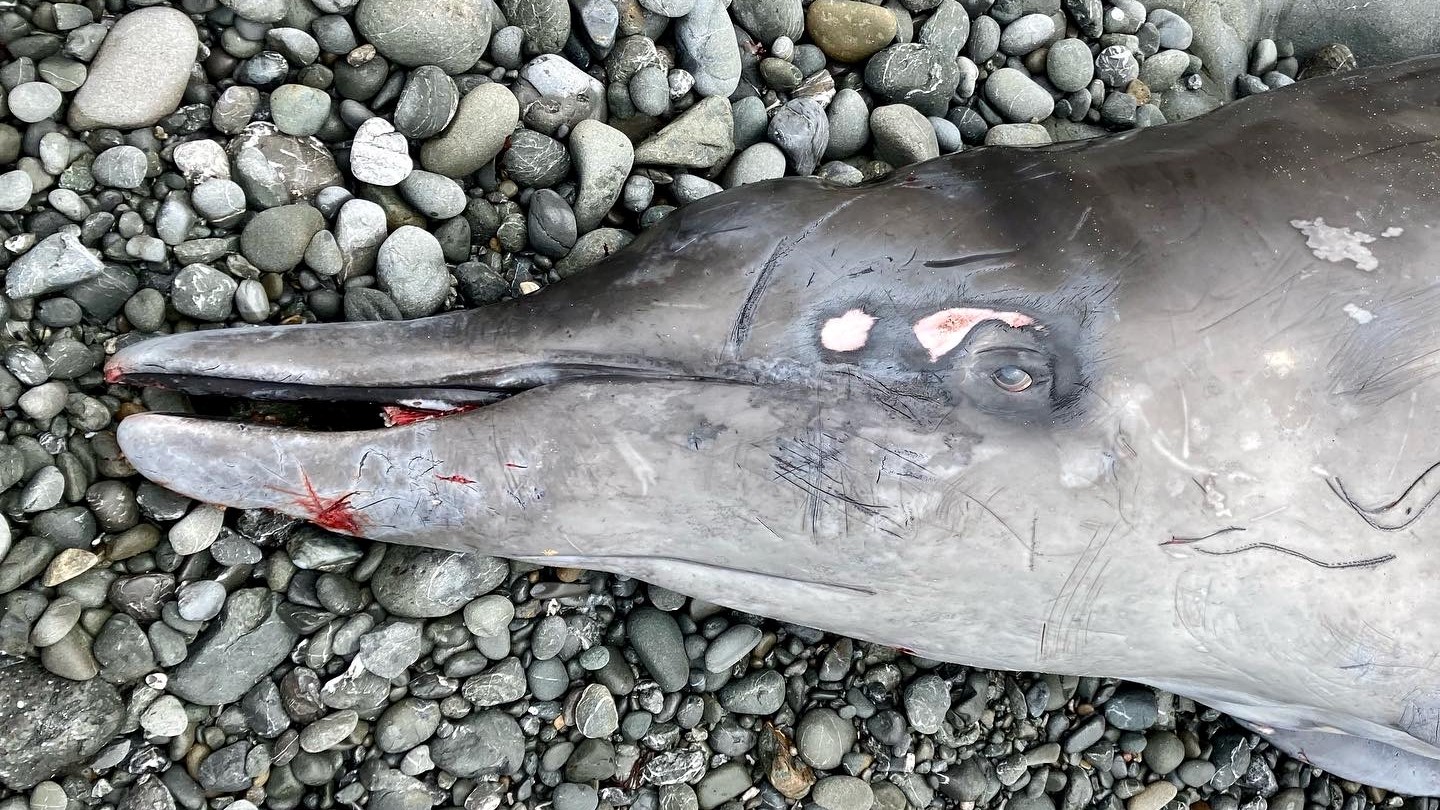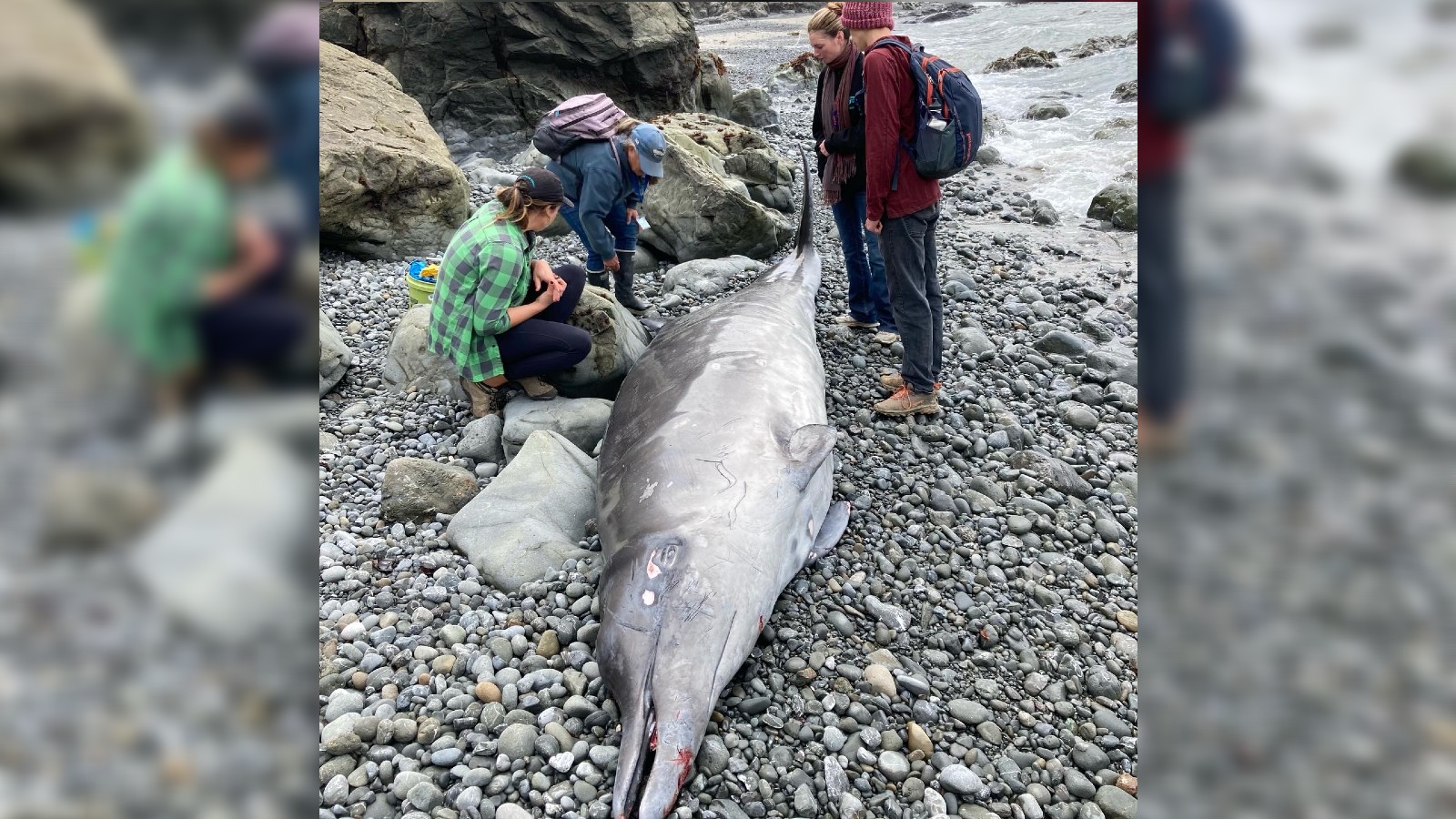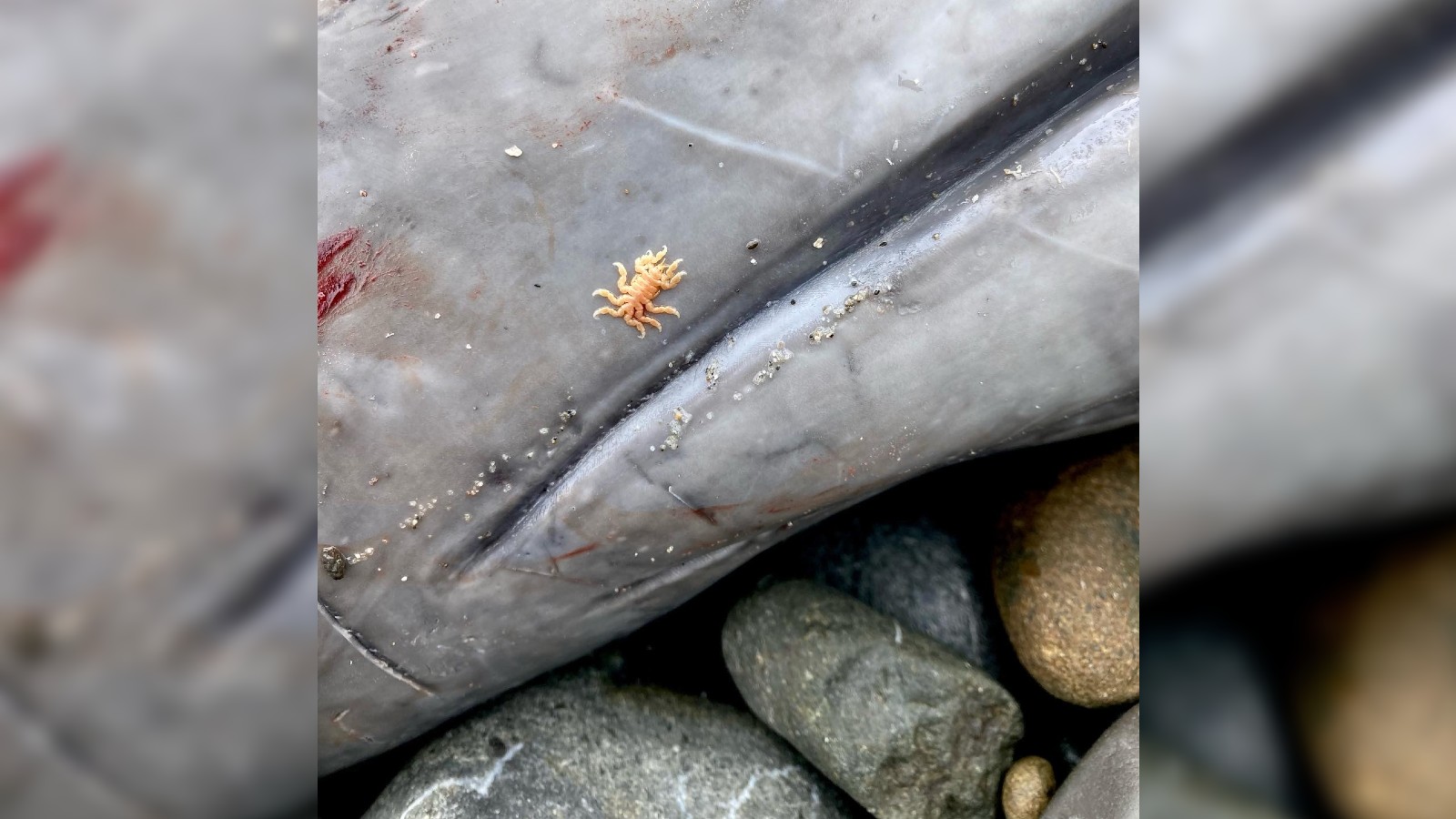Mysterious dead beaked whale covered in unusual injuries washes up on California beach
Experts are unsure which species it belongs to.

The corpse of a rarely seen type of beaked whale recently washed up on a California beach with mysterious wounds on its face and scrape marks all over its body. Experts are unsure what caused these injuries, how the whale died or even which species this pointy-nosed cetacean belongs to.
The unusual dolphin-like whale's remains, which measured around 16 feet (4.9 meters) long, were found May 15 on a beach at Jug Handle State Natural Reserve near Fort Bragg. A team from the nearby Noyo Center for Marine Science recovered the body with help from researchers at the California Academy of Sciences (CAS) in San Francisco. The group collected samples of the whale’s blubber, organs and skull, and sent them to the National Marine Mammal Tissue Bank in Charleston, South Carolina, for analysis.
Little is known about these mysterious whales, which belong to the family Ziphiidae. Scientists think there are around two dozen species, but of those only a few species, including Baird's beaked whale (Berardius bairdii) and Cuvier's beaked whale (Ziphius cavirostris), have been studied extensively. However, scientists do know that these whales can "dive deeper than any other marine mammal," according to a Facebook post by the Noyo Center, and they can stay underwater for more than three hours.
This incredible diving ability is one of the main reasons why scientists know so little about beaked whales. "They’re not seen very often, alive or dead," which makes this stranding "really important," Moe Flannery, senior collections manager for birds and marine mammals at CAS, told news site SFGate.
Related: Nearly 30 pilot whales die after mass stranding in New Zealand
The recently washed-up specimen is likely a Hubbs' beaked whale (Mesoplodon carlhubbsi) or a Stejneger's beaked whale (Mesoplodon stejnegeri), Flannery told SFGate. However, it could also be a ginkgo-toothed beaked whale (Mesoplodon ginkgodens) or a pygmy beaked whale (Mesoplodon peruvianus), Sascha Hooker, a marine mammal biologist at the University of St. Andrews in Scotland who was not involved in the recovery process, told Live Science in an email. Sequencing the DNA from the whale's tissue samples will help determine the exact species.

The team from the Noyo Center noted that the whale’s beak had unusual, nasty-looking injuries around it, but the scientists could not tell what had caused the wounds. "There appears to be some trauma near the jaw, but until they look more closely at the skull itself it’s hard to say what that was from," Trey Petrey, the interpretive facilities manager at the Noyo Center who helped remove the dead whale from the beach, told SFGate.
Sign up for the Live Science daily newsletter now
Get the world’s most fascinating discoveries delivered straight to your inbox.
One possible cause of the whale's injuries is a vessel strike. Beaked whales and other cetaceans (the group that includes whales, dolphins and porpoises) are among the marine animals that are most at risk of being hit by a boat because they use sound for navigation and noise pollution from boats can disorientate them, according to a 2020 study published in the journal Frontiers in Marine Science.
It will also be challenging to tell if the dead whale's injuries were caused before or after the body washed up on the beach, Hooker added.
The dead whale's corpse was also marred by scratches covering its face and body. But most of these scrapes, known as rake marks, were likely inflicted over time by other beaked whales. Most beaked whales are toothless except for a single large pair of tusk-like teeth in their lower jaw; these teeth are typically exclusive to males, who use them to fight off reproductive rivals, Hooker said. It's possible that the rake marks on the dead cetacean were inflicted during past duels, she added, although it is as yet unknown if the dead whale is male or female. It's also possible that some of the scratches were caused by past vessel strikes that were non-lethal.
"It's hard to tell from the photos, but the body condition looks a little poor," with the backbone appearing quite pronounced in some of the images, Hooker said. This could suggest that the whale had either been struggling to find food or had potentially ingested plastic, which has become a big problem for beaked whales, she noted. (Whales that swallow plastic may starve if the indigestible material can't be expelled; plastic that lodges in a whale's guts prevents the whale from filling its stomach with food and may affect the animal's digestion.) Analysis of the whale's stomach contents will determine if this played a part in its death.

Another noteworthy detail of the beached carcass was the presence of a whale louse on the cetacean's skin. Whale lice are tiny parasitic shrimp that attach themselves to cetaceans and live their entire lives clinging to the skin of a single individual, where they filter microbes out of the water and occasionally nibble on their host's skin. In a 2018 study published in the Journal of Experimental Marine Biology and Ecology, scientists found that whale lice, which are often specific to a single cetacean species, can be analyzed to track the migration patterns of whales. But it is unknown if the louse on the dead beaked whale has preserved a record of its host's journeys.
Nevertheless, the researchers at the Noyo Center hope that much will be learned about beaked whales from this unfortunate event.
"I think it’s sometimes very humbling to see these animals washed ashore and to get a really good look at them so close," Petrey told SFGate. "It’s kind of heartbreaking to see them dead, but it’s a good experience in terms of anyone interested in marine science to have the opportunity to see a specimen like that."
Originally published on Live Science.

Harry is a U.K.-based senior staff writer at Live Science. He studied marine biology at the University of Exeter before training to become a journalist. He covers a wide range of topics including space exploration, planetary science, space weather, climate change, animal behavior and paleontology. His recent work on the solar maximum won "best space submission" at the 2024 Aerospace Media Awards and was shortlisted in the "top scoop" category at the NCTJ Awards for Excellence in 2023. He also writes Live Science's weekly Earth from space series.










